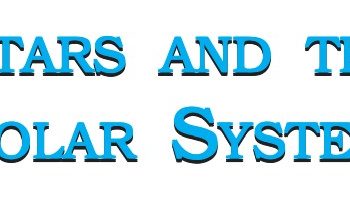Class 8 Science Chapter 5 Light
Our eyes alone cannot see any object. It is possible only when light reflected from an object enters our eyes.
The light by which we can see an object may have been emitted by the object (if the object is luminous) or may have been reflected by the object (if the object is non-luminous).
Light is reflected from all surfaces.
Regular reflection takes place when light is incident on smooth, polished and regular surfaces.
Diffused/irregular reflection takes place from rough surfaces.
Images are formed by regular reflection.
The ray of light which falls on a mirror is called incident ray. The ray which comes back from the surface of a mirror after reflection is known as a reflected ray. A perpendicular line at the point of incidence is called normal.
The image formed in a plane mirror undergoes lateral inversion.
Class 8 Science Chapter 5 Light
Two mirrors inclined to each other give multiple images.
Beautiful patterns are fon led in a kaleidoscope because of multiple reflections.
Sunlight, called white light, consists of seven colours.
Splitting of light into its constituent colours is known as dispersion.
A human eye consists of various parts—Cornea, Iris, Pupil, Eye lens, Retina, Optic nerves.
If the eye lens becomes opaque, the eyesight becomes foggy. This disease is called a cataract. It can be treated by removing the opaque lens and inserting a new artificial lens.
The most comfortable distance at which one can read with a normal eye is 25 cm.
The impression of an image persists on the retina for about 116th of the second.
Night blindness is the most common eye problem and it happens due to vitamin A deficiency.
Class 8 Science Chapter 5 Light
Angle of Incidence: The angle between the normal and the incident ray is called the angle of incidence.
Angle of Reflection: The angle between the normal and the reflected ray is called the angle of reflection.
Blind Spot: At the junction of the optic nerve and the retina, there are no sensory cells, so no vision is possible on that spot. This is called the blind spot.
Braille System: It is the most popular resource for reading and writing of visually challenged persons developed by Louis Braille.
Cones: Cones are nerve cells on retina, which are sensitive to bright light and sense colour.
Cornea: It is the transparent front part of the eye.
Diffused Reflection: The light reflected from non-polished surfaces is also scattered back. But the light reflected from them is not in a well-defined direction. It spreads out in all directions. This is called Diffused reflection.
Class 8 Science Chapter 5 Light
Dispersion of Light
- Sunlight known as white light consists of seven different colours.
- Splitting of light into its constituent colours is known as dispersion.
- Prism can split light into its constituent colours.
Iris is the coloured part of the eye. It controls the size of the pupil.
Kaleidoscope: There is an interesting device based on the principle of multiple reflections in inclined mirrors. It is called Kaleidoscope.
Lateral Inversion: Phenomenon of changing side left to right and right to left by the mirror while forming images is called Lateral inversion.
Laws of Reflection
The two laws of reflection are as follows:
- The incident ray, the normal and the reflected ray all lie on the same plane at the point of incidence.
- The angle of reflection is always equal to the angle of incidence. (∠i = ∠r).
The pupil is a small opening in the cornea.
Regular Reflection: Reflection from a smooth surface like that of a mirror is called regular reflection.
The retina is the site of the formation of an image.
Rods: Rods are the nerve cells on retina, which are sensitive to dim light.
Reflection of Light: Scattering back of the light, when falls on shining and smooth surfaces, is called reflection.
Class 8 Science Chapter 5 Light
Links
10th Class Maths Notes Chapter 1 Real Numbers
The Food we Need AP 6th Class Science Chapter 1 New and Best Notes.
Natural Resources- AP Class 10 Biology New Notes
Our environment Our concern – AP Class 10 Biology New Notes
AP Class 10 Respiration Notes | Biology Notes | New & Best
My Class Notes- For 2020 Text Books-New & Best answers
Mallika Goes to School -New 5th Class English Unit-1- Best Answers
Light of reflection and refraction Notes New and Best for IIT Foundation
Errors and Types of Errors – Inter Physics
6th Class Social – Emergence of Kingdoms and Republics
6th Class Social – Early Civilisations Best Notes
6th Class Social – Early Life to Settled Life Best Notes
6th Class Social – Land Forms – Andhra Pradesh Best Notes
6th Class Social Studies – Maps Best Notes
6th Class Social Studies – Globe Model of the Earth Best Notes
6th Class Social Studies – Our Earth in the Solar System
Class 8 Science Chapter 5 Light



